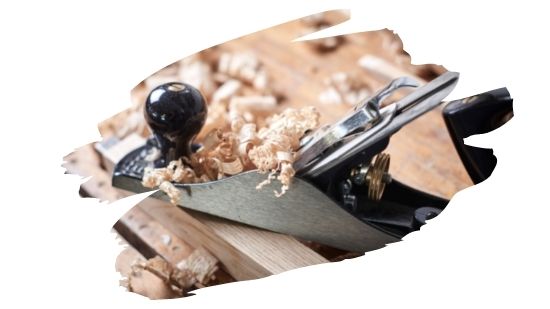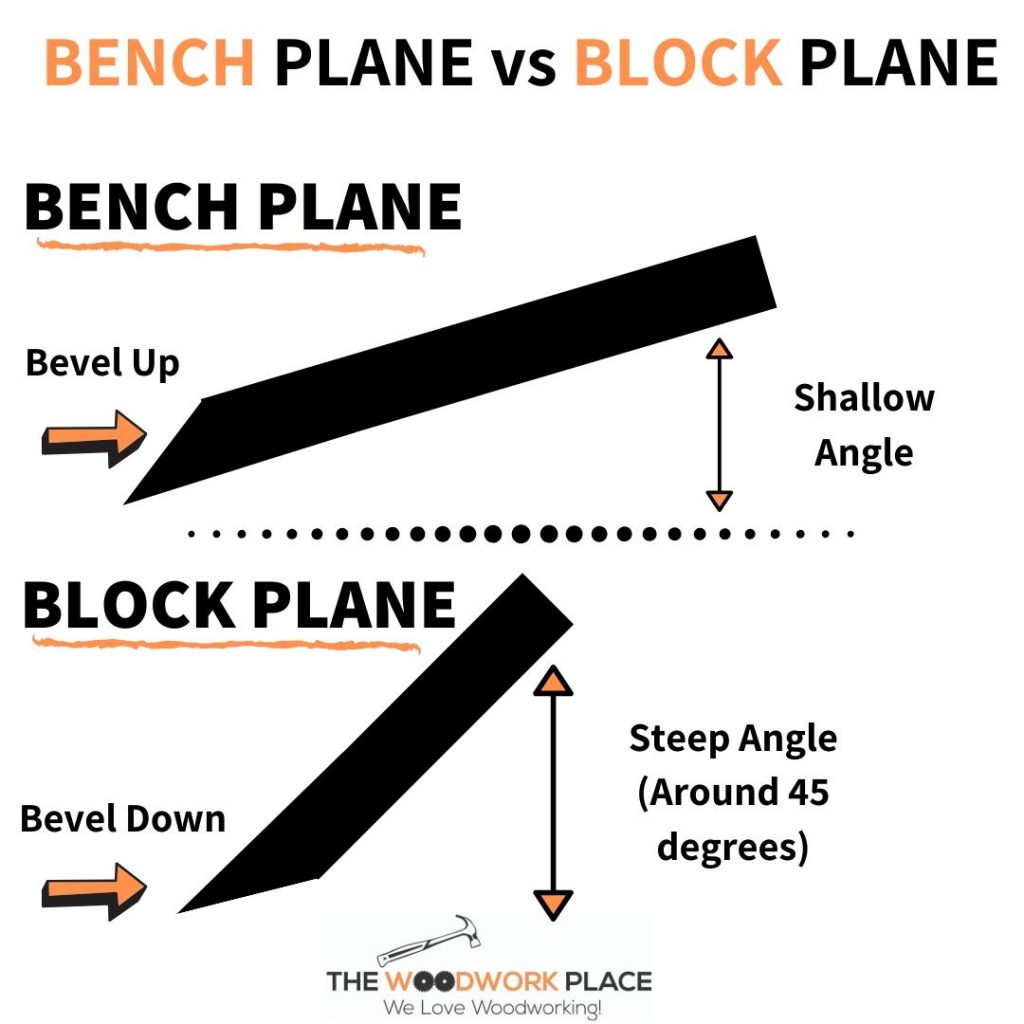Bench planes used to be a staple hand tool in most woodworking shops, that is until power tools usurped their place.
The good old bench plane was used for shaping wood. But, nowadays, a half decent orbital sander can smooth down rough edges in next to no time at all.
A bench plane is a hand tool that shapes wood by removing excess wood off a piece or project. It can be used to flatten down the surface of the wood or to simply smooth down lumber.
But there are many different types of bench planes – both big and small – each with a uniquely useful advantage for different types of woodwork projects.
So if you want to learn more about bench planes (and which ones are best for you), keep reading…

This post may contain affiliate links to products that we receive a commission for (at no additional cost to you). Learn more here.
What Are Different Hand Planes Used For?
First of all, to quickly clarify, bench planes are a type of hand plane.
However, more specifically, bench planes are a type of stocky hand plane that is used almost exclusively on a work bench.
There are many different types of hand planes beyond the Bench Plane (such as Block Planes or Scrub Planes).
But for this post, we will be focusing on the variants of the Bench Plane specifically.
There are a few different types of bench planes that you can use to get a woodwork project done right.
They vary in size (since they each have slightly different features that can be used for different jobs), but each have a functional use.
Here is a quick rundown of each hand plane (and what they do). And, just for the sake of clarity, we’ll list them in optimal order of use.
Types Of Bench Planes And Their Uses
- Jack Plane: What Is A Jack Plane Used For?
Also known as a ‘Fore’ plane, this type of bench plane is used for getting the wood down to size, wicking away at any surplus wood stock.
What Is The Difference Between A Jack Plane And A Bench Plane?
Quick answer, there is no difference.
Long answer, all jack planes are bench planes, but not all bench planes are jack planes.
Jack planes, therefore, are simply a variant of bench planes.
- Jointer Plane: What Do Jointer Planes Do?
Also known as the ‘Try’ or ‘Trying’ plane, this hand tool is used to straighten the edges of rough lumber.
- Smoothing Plane: Why Do You Need A Smoothing Plane?
Well, you need a smoothing plane because it does exactly what it claims to in its name. Smoothing planes make quick work of smoothing out the wood surface.
Which is very important if you want to avoid getting splinters every time you handle the timber!
Wait! But You Haven’t Mentioned Anything About Block Planes!
Well, thats because block planes are a slightly different type of hand plane from bench planes.
Block plane are versatile instruments – typically much smaller than bench planes – that are used to plane wood craft items that wouldn’t fit easily atop a workbench.
You can get block planes that are small enough to fit in the palm of your hand, making them perfect to be carried about almost anywhere (even onto the job site).
Which makes them ideal tools for doing any last minute touch up work — such as flush-trimming joints or smoothing down very sharp edges.
Bench Plane v Block Planes: The Key Difference
One of the key distinctions between the bench and block planes lies in the way each planes bevel is set up.
Check out the picture guide below to see how they compare:

OK, Got It… But Is It Possible To Plane Wood Without A Planer?
If you want to stick to manual tools, then you absolutely can plane without a planer. However, it will require a good dose of effort.
For example, sandpaper can be used to plane wood grain.
Or you could opt for a power tool, such as a router. A Fixed Base Router is a router with a roundover bit that’s set to one depth.
In a nutshell, a fixed base router does a great job of cutting smooth straight lines. This is an excellent tool to start with if you’re a new router and working on simpler projects.
Final Thoughts
So which bench plane is right for you? The answer to this question can vary wildly from woodworker to woodworker.
Do you simply want the most efficient tools for the job? Well then, in most instances, an orbital sander combined with a quality power planer can do everything that a full compliment of hand planers can do.
On the other hand, are you trying to set up a wood work shop in your apartment – and want to keep the noise down for the neighbors? In that case, a set of hand planers are the ideal low-noise tools for the task.


